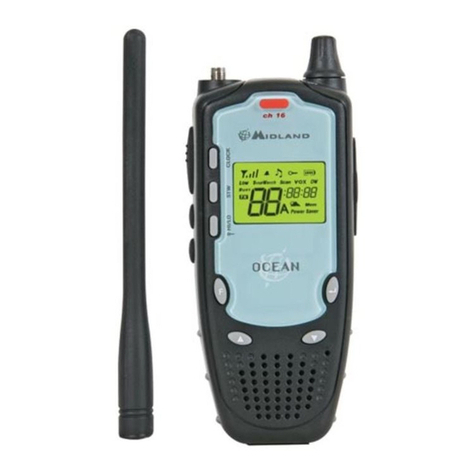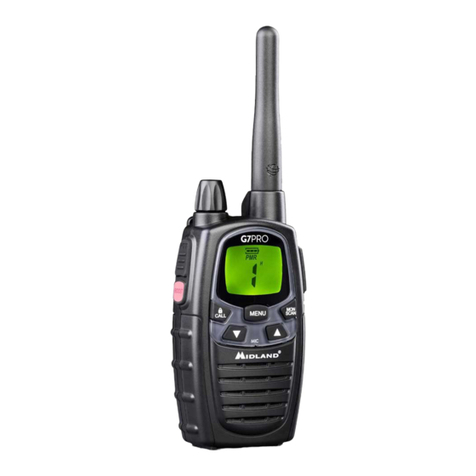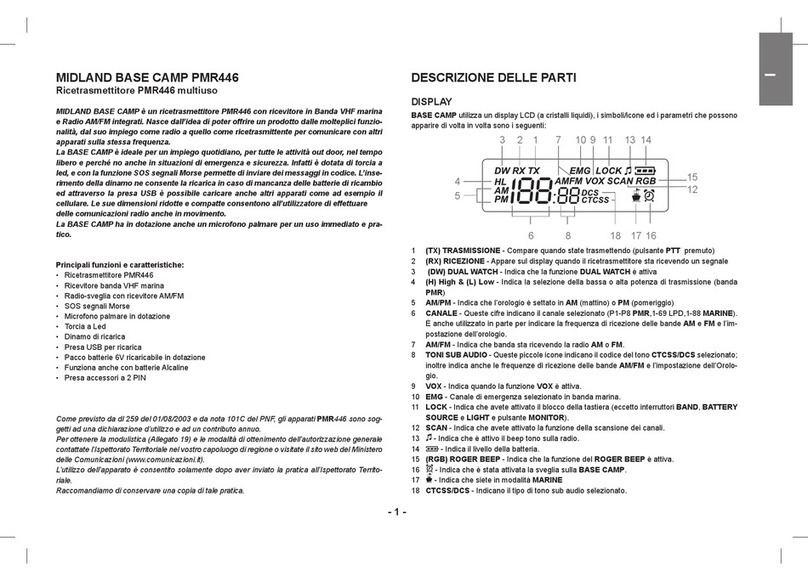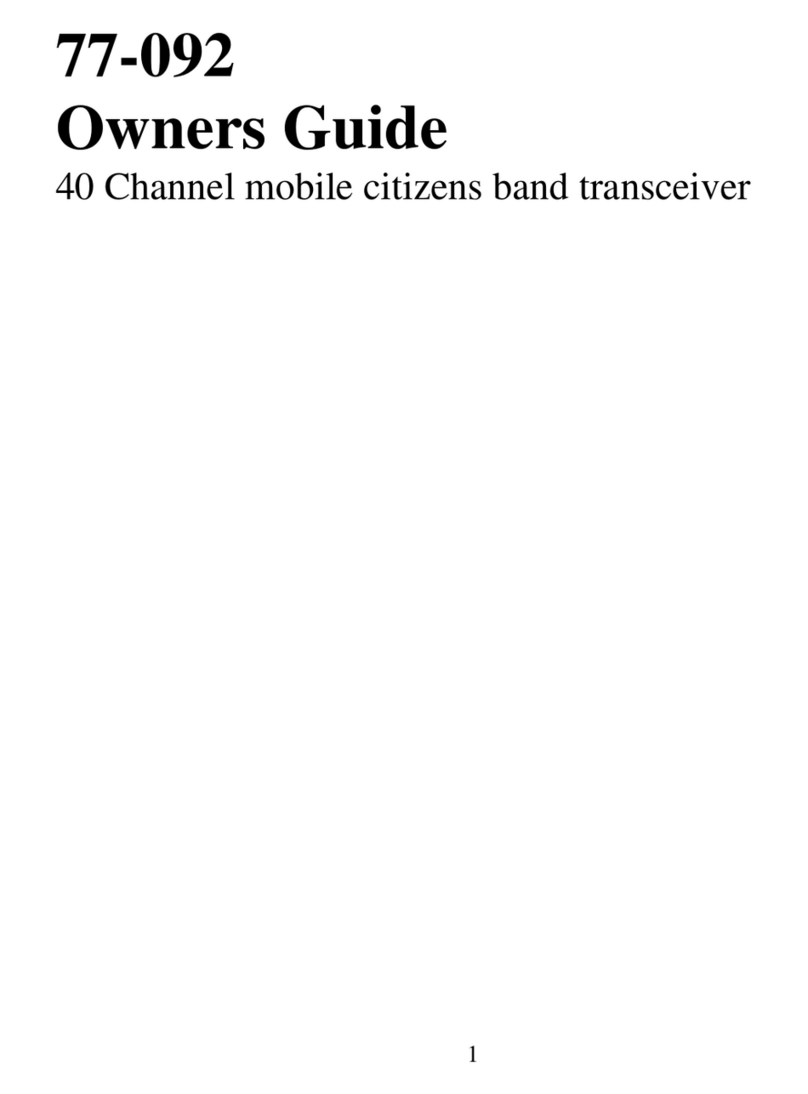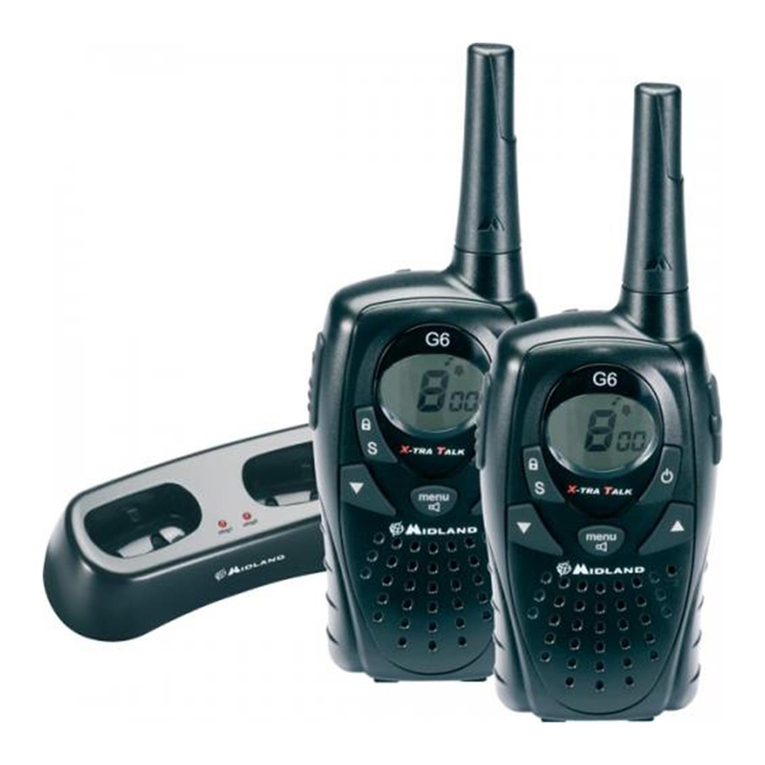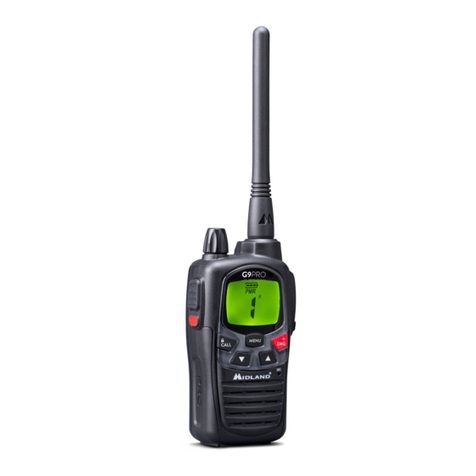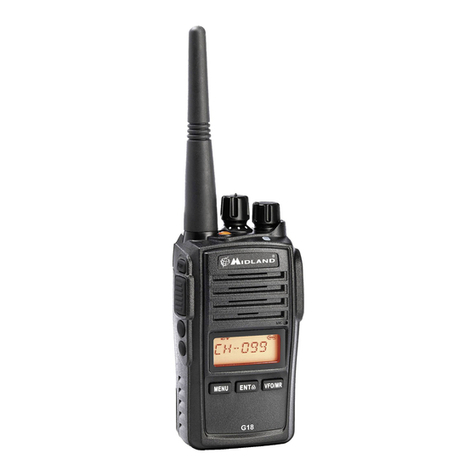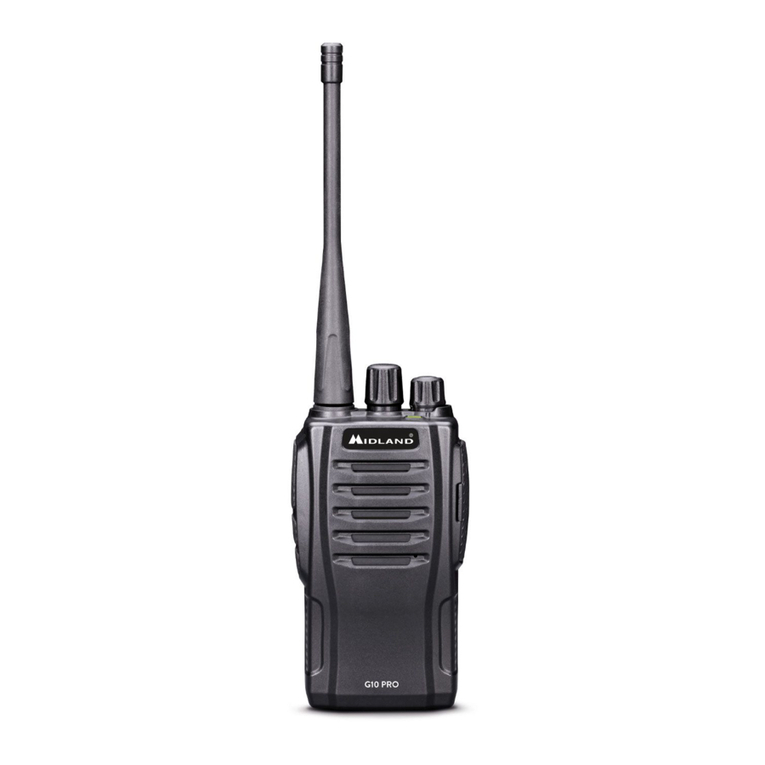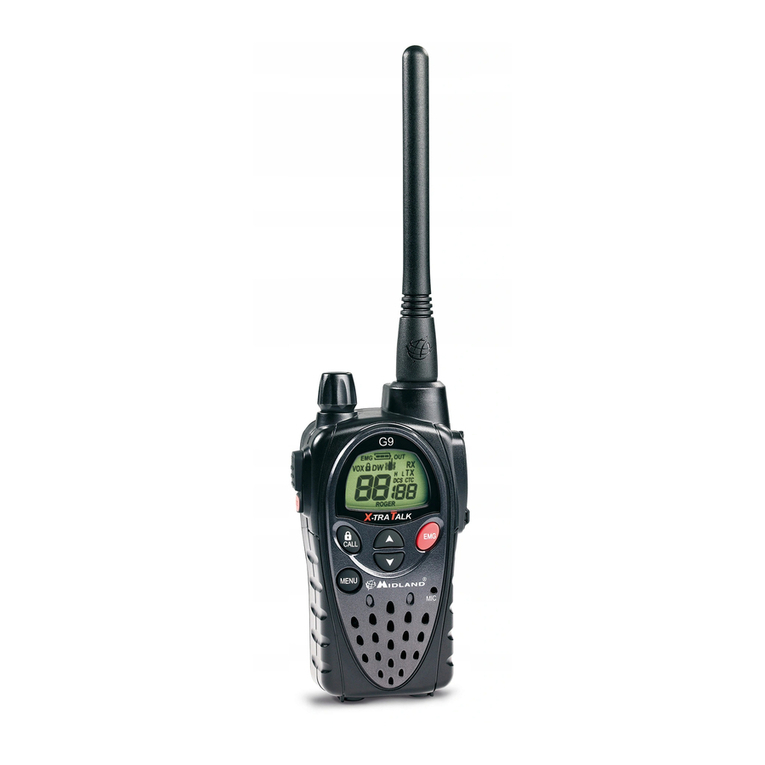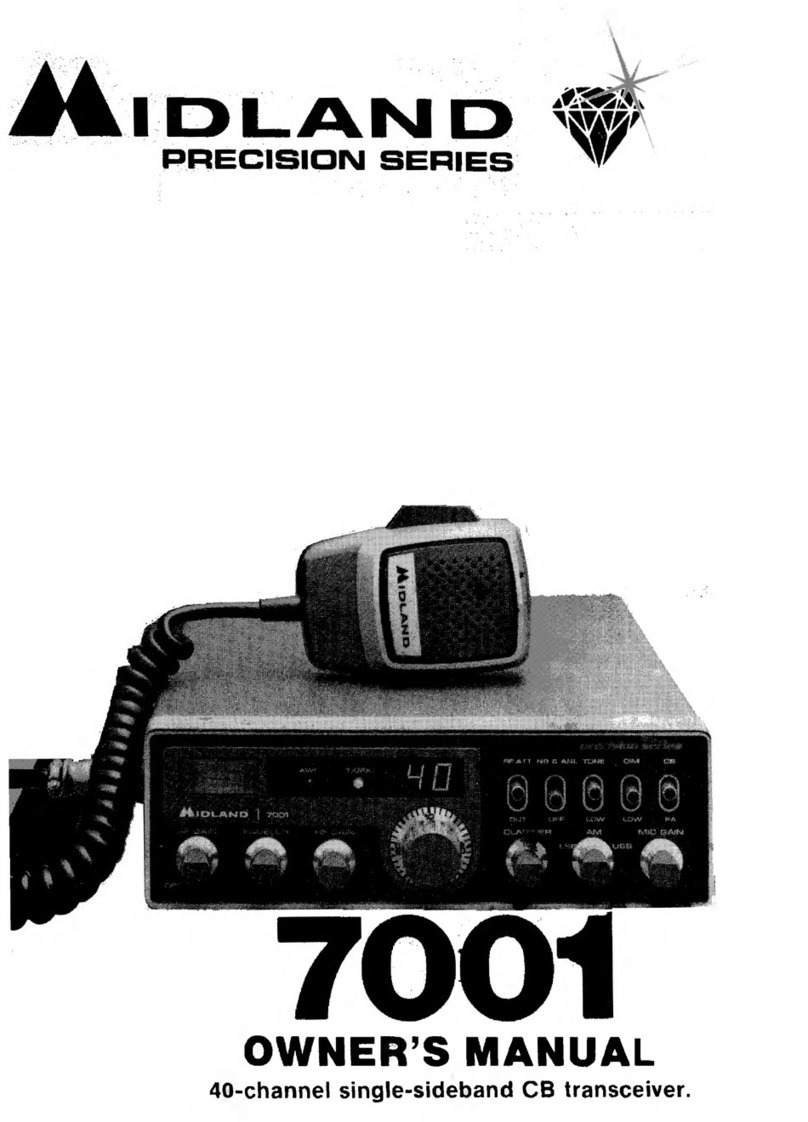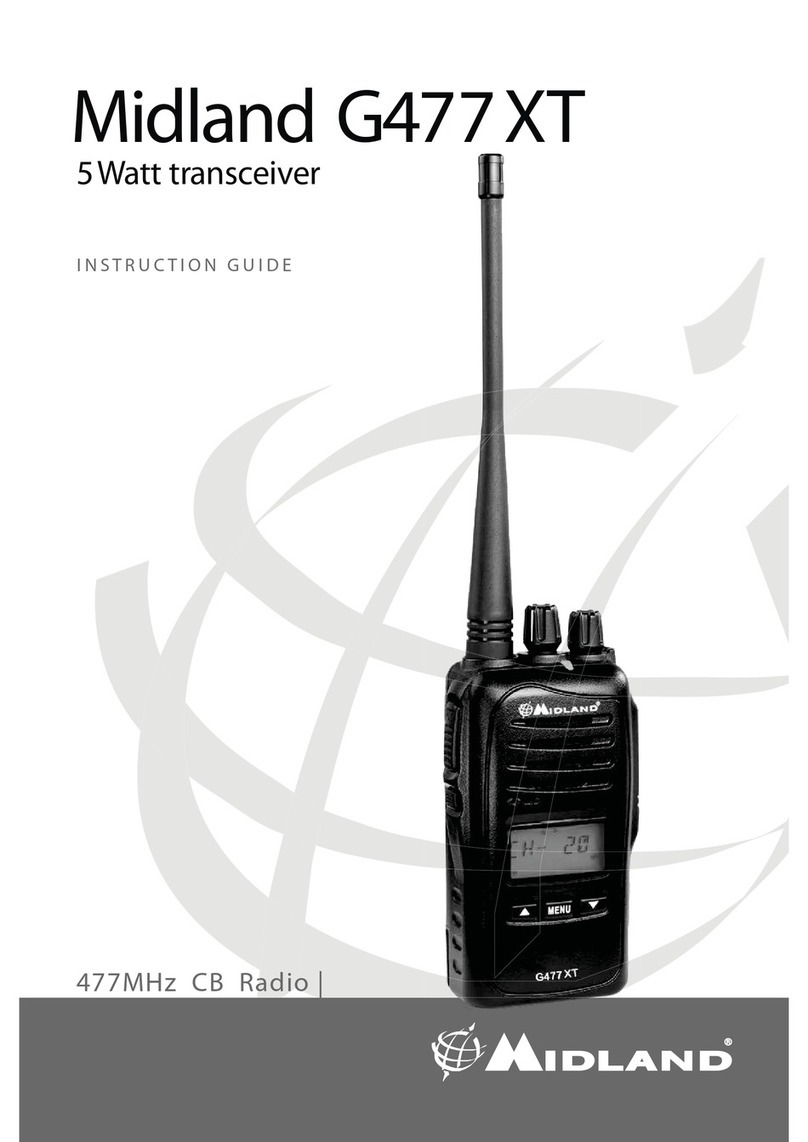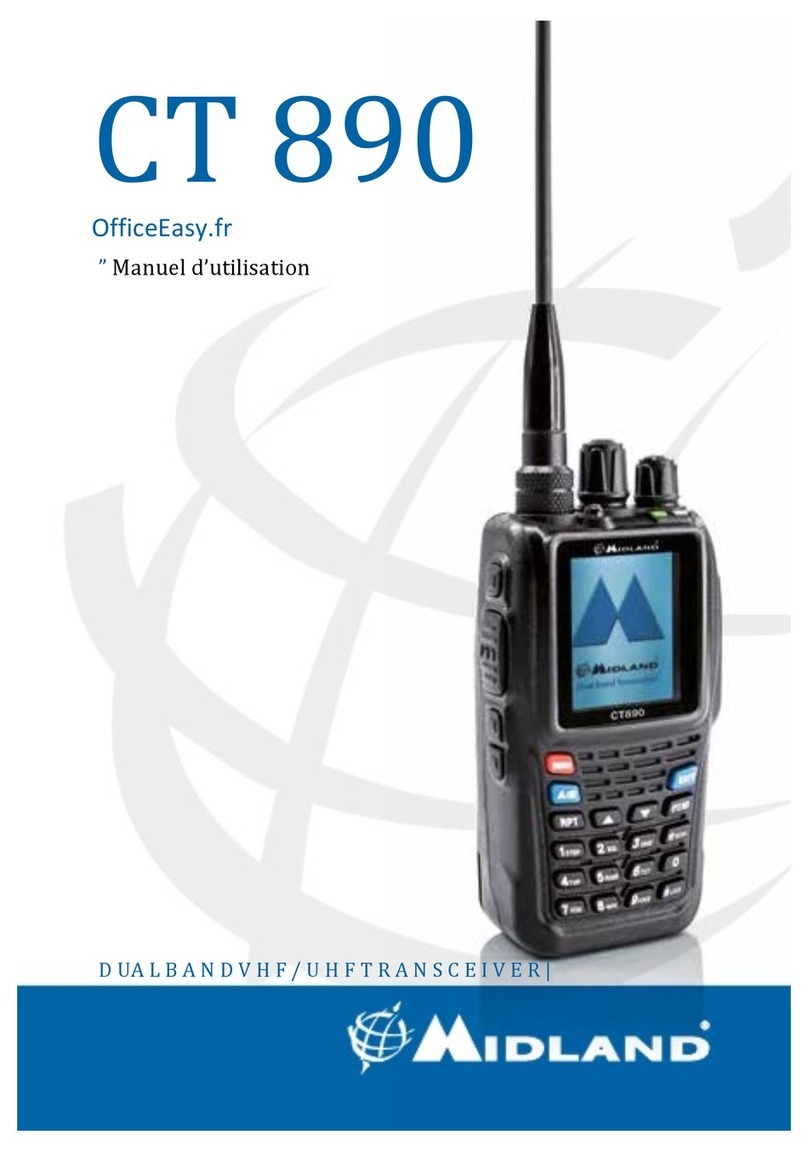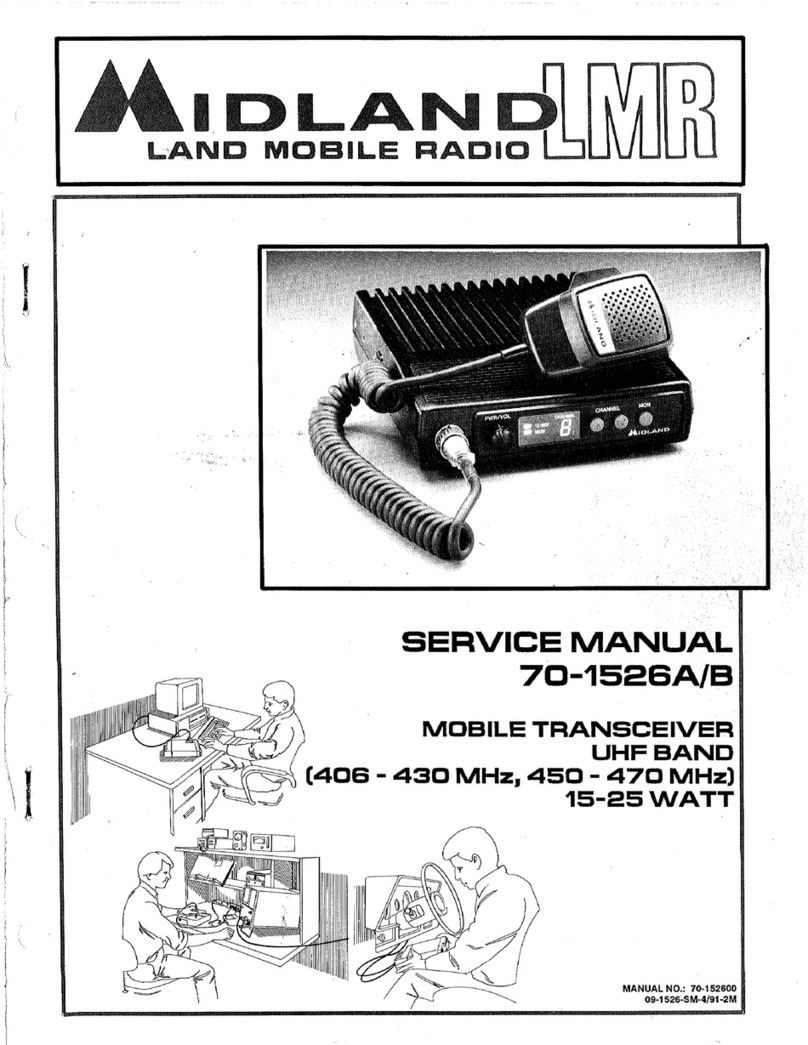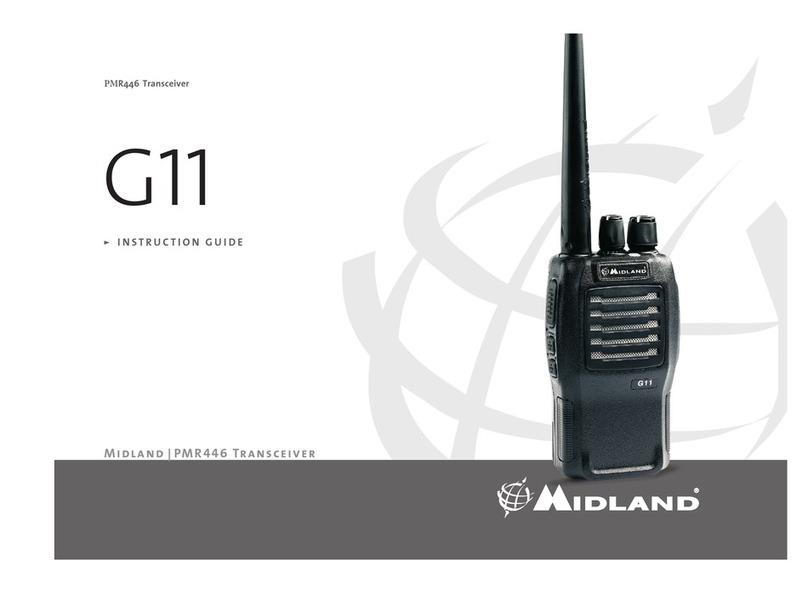18 | CT710 Instruction Guide CT710 Instruction Guide | 19
Menu Function introduction and setting
Emergency Alarm
There are two types of alarms:
1. Press flank key 2 and flank key 1 at the same time: the radio will go to
emergency alarm and will send out, at the same time, the alarm sound
and ANI to your partner (if programmed). The alarm stays active till
the PTT is pressed.
2 By means of the programming software, an emergency channel can
be specially set. To activate it, press briefly # T/R: now you can transmit
on the selected emergency frequency. To exit, press VFO/MR.
Setting Reverse Frequency Function
In channel/Frequency mode, hold down #for two seconds until “T*R?”
appears. When “REV”is displayed on the LCD, the Reverse frequency
function is enabled. To deactivate this function, hold down # for two
seconds.
Scanning
The Scan version is very useful to monitor the channels before transmit-
ting.
Select scan type
Press MENU and rotate the encoder to item 13, the screen will display
“013 SCANS?”.
Press ENTER: now you are into the scanning mode selection.
You have three types of scanning to choose amongst: TO, CO, SE.
Time-operated scan (TO)
When the radio detects a signal it will stop scanning; the status will re-
main about 5 seconds but the radio will continue to scan even if the si-
gnal is still there.
Carrier-operated scan (CO)
The radio will stop scanning when detects a signal and remains on the
same frequency until the signal is missing.
Search Scan (SE)
When the radio detects a signal, it remains on that channel and stop
scanning.
Frequency or channel scan
In channel /frequency mode, press MENU and 1SCAN: the radio will scan
from current channel through all the channels and, whenever any signal
is detected, the radio will stop scanning for 8 seconds. Then press PTT to
transmit: it will then continue to scan after 8 seconds.
Press any key except PTT to end scanning: the radio will return to the
channel or frequency in use before starting the scan function.
Priority channel scan
Priority scan means that the radio starts scanning from the priority chan-
nel first and then scans the other channels. For example, if the priority
channel is 1, the scan will be 1-2;1-3;1-4;…….
Procedure:
In channel mode ,press MENU and 2PRI: the radio will scan priority chan-
nel, whenever any signal is detected, the radio will suspend the scan for
8 seconds, then press PTT key to transmit. It will then continue to scan
after 8 seconds.
Press any key except PTT key to end scanning.
VOX Sensitivity Setting
This function allows hand-free communications: you activate the
transmission when you speak to the microphone without pressing the
PTT button. It stops transmitting automatically once you stop speaking.
The sensitivity can be adjusted in different levels that can be set upon
your needs.
Procedure:
In Frequency mode, press MENU and 3VOX keys: the screen will display
“003 VOX?”.
Press ENTER and the display will show “VOX OFF”.
To adjust the desired sensitivity level, press any number key (0-9) on the
keypad or rotate the encoder.
To confirm your selection press ENTER and VFO/MR to exit.
Power Setting (high or low)
With this function you can select the power level, you can choose betwe-
en High (H) and Low (L).
